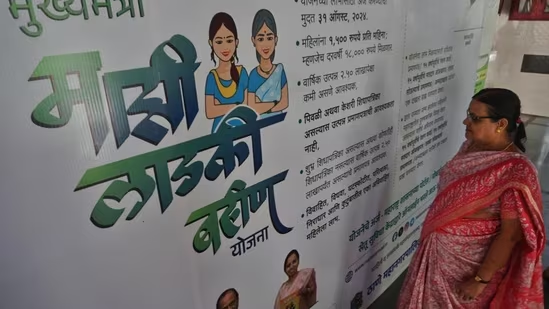Now Reading: Over 14,000 Men Received Funds Under Maharashtra’s Ladki Bahin Scheme Meant for Women
-
01
Over 14,000 Men Received Funds Under Maharashtra’s Ladki Bahin Scheme Meant for Women
Over 14,000 Men Received Funds Under Maharashtra’s Ladki Bahin Scheme Meant for Women

Maharashtra’s Ladki Bahin Yojana, launched to financially support girls from economically weaker families, has run into controversy after it was revealed that over 14,000 men received funds under the scheme. The purpose of the initiative was to directly benefit women, yet technical or procedural lapses have led to large-scale disbursal to unintended male beneficiaries.
The issue has raised serious concerns about the verification process and transparency in government welfare schemes.
What the Scheme Was Designed For
Ladki Bahin Yojana was launched to assist girls from low-income households by offering monthly financial aid. It aimed to reduce gender disparity, promote education among girls, and ease the financial burden on families struggling with daily expenses. Applicants were expected to be women, especially from marginalised sections, meeting income and eligibility requirements.
The scheme’s appeal spread quickly, particularly in Tier 2 and rural areas, where such direct financial assistance can significantly impact household stability.
What Went Wrong
Recent data shows that 14,460 men received the ₹1,500 monthly benefit, despite the scheme being women-specific. Officials claim this happened largely due to errors in application processing—such as Aadhaar mismatches, gender field confusion in documents, or manual data entry issues.
In some cases, family members may have submitted applications on behalf of female relatives but entered their own details by mistake. In others, fraudulent claims might have slipped through due to gaps in cross-verification.
The government is now in damage-control mode, trying to recover the wrongly credited amounts and update its beneficiary database.
Government Response
The Maharashtra administration has acknowledged the flaw and assured that steps are being taken to clean up the records. Officials say future payments will be put on hold for flagged accounts, and a fresh round of verification is underway.
There’s also talk of introducing a more tech-based filtering system and linking all applications with strict biometric authentication to avoid further misuse.
However, opposition parties are criticising the oversight, calling it an example of how large-scale welfare schemes are often rolled out without robust infrastructure or monitoring.
Why This Matters
This incident isn’t just about numbers. It highlights a recurring issue in India’s public welfare machinery—well-meaning schemes often falter during implementation. In Tier 2 cities and rural areas especially, where digital literacy and access to documentation are often limited, even small errors can block or misdirect benefits meant for the most vulnerable.
For women who actually qualified for the scheme but haven’t received their payments yet, this discovery is both frustrating and disheartening.
Conclusion
The Ladki Bahin scheme was created with the right intent, but its misapplication underscores the need for better checks and stronger accountability. As the state government works to fix these lapses, the bigger lesson lies in building a delivery system that protects the integrity of public funds and ensures that aid truly reaches those it is meant for.

























